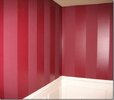BlackSheepTwoOneFour
Well-Known Member
- Joined
- Jun 9, 2013
- Messages
- 1,026
As I already said, it is going to be difficult to replicate the rocket you're looking to achieve - especially if you are a beginner.I mean i want it to be realistic with the coating but i fear being to detailed will take a ton of work and time and for it being my first model maybe doing something simple at first then getting better at detailing it. I am also in the states but live in a small small town we have a local hobby store they sell mostly testors.
Start out with something simple. Find a kit to use as a mule kit to experiment or practice various weathering techniques.
That's why I suggested mixing orange using white, grey, black, brown if the OP doesn't have the funds to buy all these bottles of various orange colors.The clear is for use as a filter .
I'm recommending starting with those or similar colors .
Tweaking hues is just part of the process .
Well duh… everybody knows a coat of flat will make gloss look flat.any gloss can be made matte quite easily so that's never an issue .
There is so much variation in the orange I would get a rust color, an orange, and a yellow. Then I would mix them up as needed to replicate the different shades.
No arguments there since he will be handbrushing it. It may not be accurate but it may be good enough for the OP.


